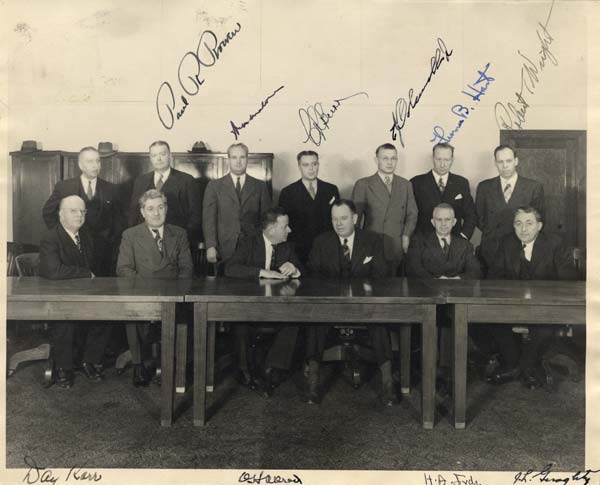

Since its inception in 1934, the SEC has always enforced the securities laws. In its first Annual Report it boasted that under the newly-adopted securities acts it had “broad powers to enforce the acts and the rules and regulations thereunder through investigations, hearings, and injunctions.”(2) By the end of its first year of operations, the Commission had over 2300 cases under investigation,(3) and had obtained “permanent injunctions against 32 defendants, temporary restraining injunctions against 28, and temporary restraining orders against 19” for “fraudulent and illegal activities” violating the Securities Act of 1933 and the Securities Exchange Act of 1934.(4) Yet the Commission did not then have a separate Division of Enforcement.
In its earliest days, it was represented in court by attorneys from its General Counsel’s office, and one of the first battles they faced was against a defendant insisting that the SEC’s lawyers lacked the power to bring cases on their own, and should instead rely on attorneys from the Department of Justice. In 1935, in SEC v Robert Collier & Co., the U.S. Court of Appeals for the Second Circuit held for the Commission and unleashed its enforcers.(5) Enforcement actions continued at a busy pace throughout the 1930s; by 1939 the SEC had an “enforcement staff” in its Washington headquarters, and reported that as of July 1, 1939, it had over 700 legal cases or investigations pending, most in areas still familiar today such as stock manipulation and accounting fraud.(6)

Most of the Commission’s enforcement work was not, however, done in its Washington headquarters but in its regional offices, originally established “largely as policing units.”(7) By 1940 “nearly all the investigations of stock frauds and violations of the provisions of the Securities Exchange Act of 1934 as to brokers, dealers, and market manipulation were conducted in the first instance” from those offices.(8) The SEC’s first Enforcement Manual, a 165-page typewritten guidebook issued in 1938, showed this, while also demonstrating that enforcement procedures were already well established. It covered topics from “initiation of investigations” (which required approval by “the Commission, the General Counsel, the Director of the Trading and Exchange Division, or the chief of the Oil and Gas Unit”) to witness interviews (“Investigators of the Commission will always demean themselves as gentlemen”) to photocopies (usually to be done at the Washington office, though in “emergencies . . . photocopies may be ordered in the field”).(9)
The regional offices dominated enforcement for the next two decades. These were lean years for the SEC; at the beginning of World War II its headquarters was moved from Washington to Philadelphia, and even after its return—which did not occur until 1948—it suffered from neglect and deep budget cuts. There was little interest in bolstering enforcement at SEC headquarters. As Irving Pollack, later Director of Enforcement and then Commissioner, recalled, in the postwar years “in the area of enforcement, the regions were pretty much omnipotent.”(10)
(1) This section owes a special debt to Daniel M. Hawke, A Brief History of the SEC’s Enforcement Program (“Hawke”).
(2) SEC Annual Report 1935: 30-31.
(3) Id.
(4) Id. at 34.
(5) SEC v Robert Collier & Co., 76 F.2d 939, 939-40 (2d Cir. 1935).
(6) SEC Annual Report 1939: 91, 96.
(7) SEC Annual Report 1940: 183-4.
(8) Id at 182.